7 Best Social Media Campaigns To Inspire You In 2025

Let’s be real: social media campaigns aren’t about dropping a random #MondayMood selfie and hoping for the best. No, babe. The best social media campaigns are full-blown cultural moments. They’re calculated, creative, and built to dominate timelines, rack up shares, and spark conversations across TikTok, Instagram, LinkedIn, X, and everywhere else your thumbs scroll.
What Are Social Media Campaigns?
If you think social media campaigns are just posting daily, think again. These campaigns are planned, purposeful, and designed to own the internet for a moment (or more). Whether you’re launching a product, rebranding with a bang, or just vibing for maximum clout, the best social media campaigns mix smart strategy, fire content, and that little thing we call ✨internet magic✨.
Think of it like rolling up to the Met Gala: not just showing up, but serving. A good campaign doesn’t just exist; it demands attention. And trust, if you’re not interesting, scroll-happy audiences will move on faster than a disappearing Story. Ready to dive in? Let’s break down some of our fav social media campaigns that had us absolutely hooked.
TL;DR? It’s how brands win online. And we’re here for it. 💅
Contents:
- 7 Examples of the Best Social Media Campaigns
- Tips to Run Successful Social Media Campaigns
- FAQs
- Final Thoughts
7 Examples of the Best Social Media Campaigns
1. Spotify Wrapped 2024

Spotify came for our souls – again. For Wrapped 2024, they used AI to emotionally roast users based on their music taste. Captions like “This playlist screams ‘texts their ex during Mercury retrograde’” had TikTok, Insta, and X users dragging themselves and loving it.
🧠 Why It Worked: Personalized, memeable, and hilarious – a recipe for an unstoppable social media campaign.
2. CeraVe x Michael Cera
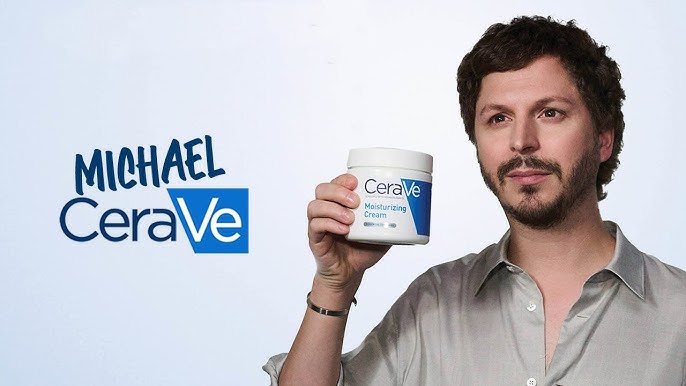
Confused? So was the internet, and that was the point. CeraVe had Michael Cera pretending he founded the brand, popping up randomly in influencer vids before dropping the truth during the Super Bowl.
🧠 Why It Worked: Chaos, celebrity, mystery – the trifecta of viral social media campaigns.
3. Liquid Death “Kegs for Pregs”
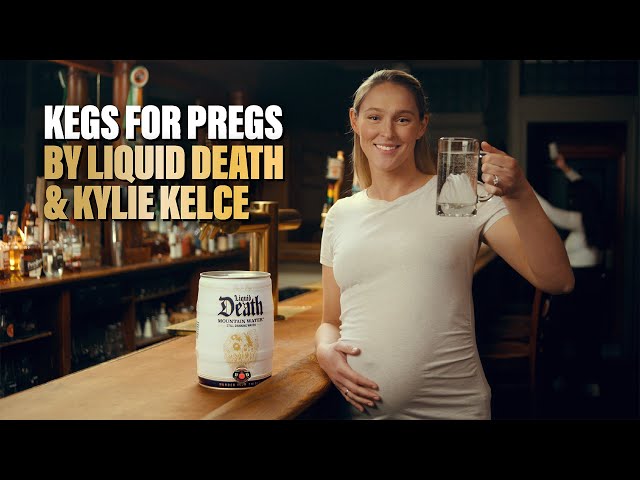
Liquid Death dropped mini kegs of water marketed toward pregnant moms. Kylie Kelce shotgunning Liquid Death? Iconic. The internet gagged, and the kegs sold out in hours.
🧠 Why It Worked: Satirical, disruptive, meme-ready. The best social media campaigns aren’t scared to get weird.
4. Sensory Beauty Campaigns (e.l.f., Summer Fridays, Rhode)
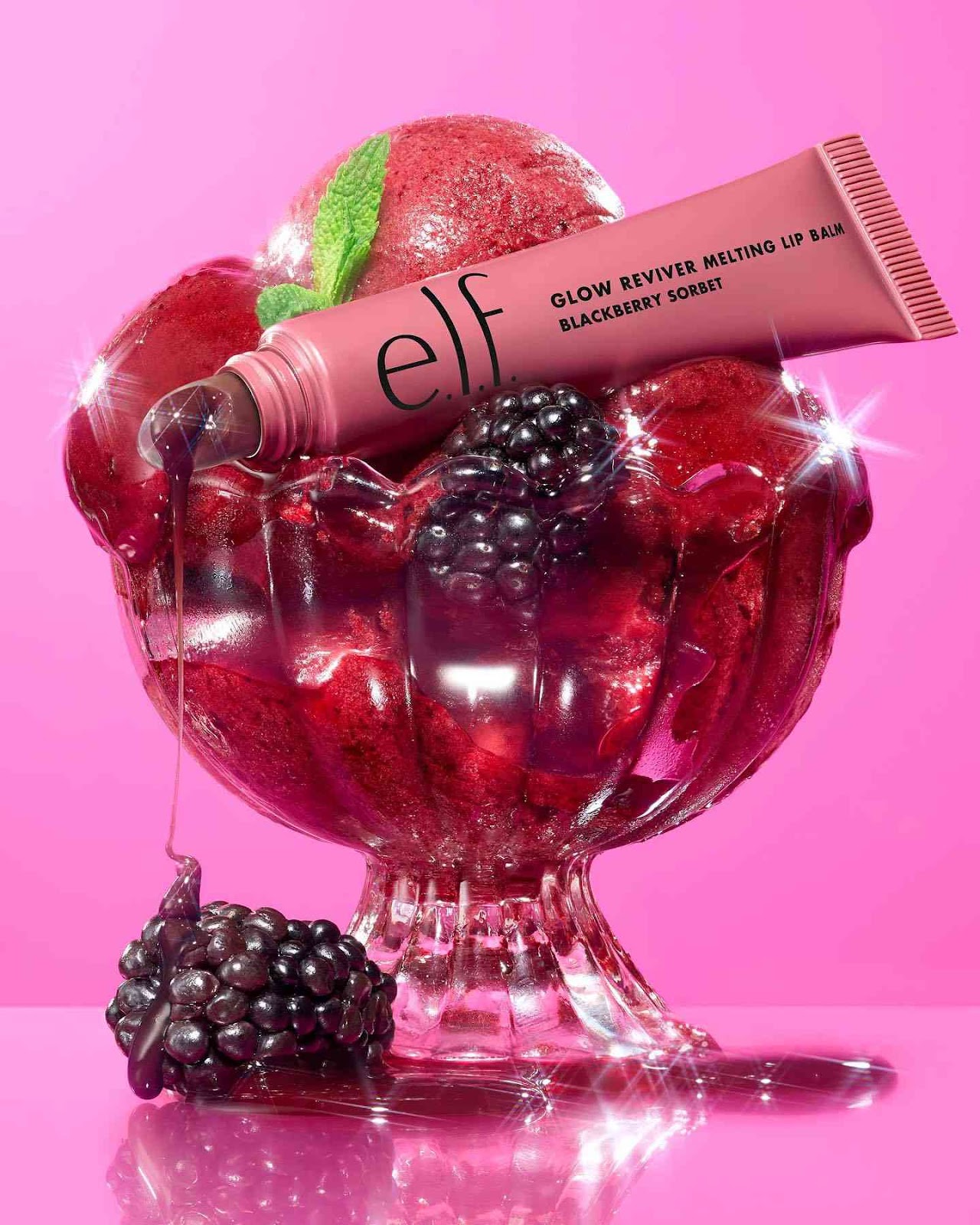

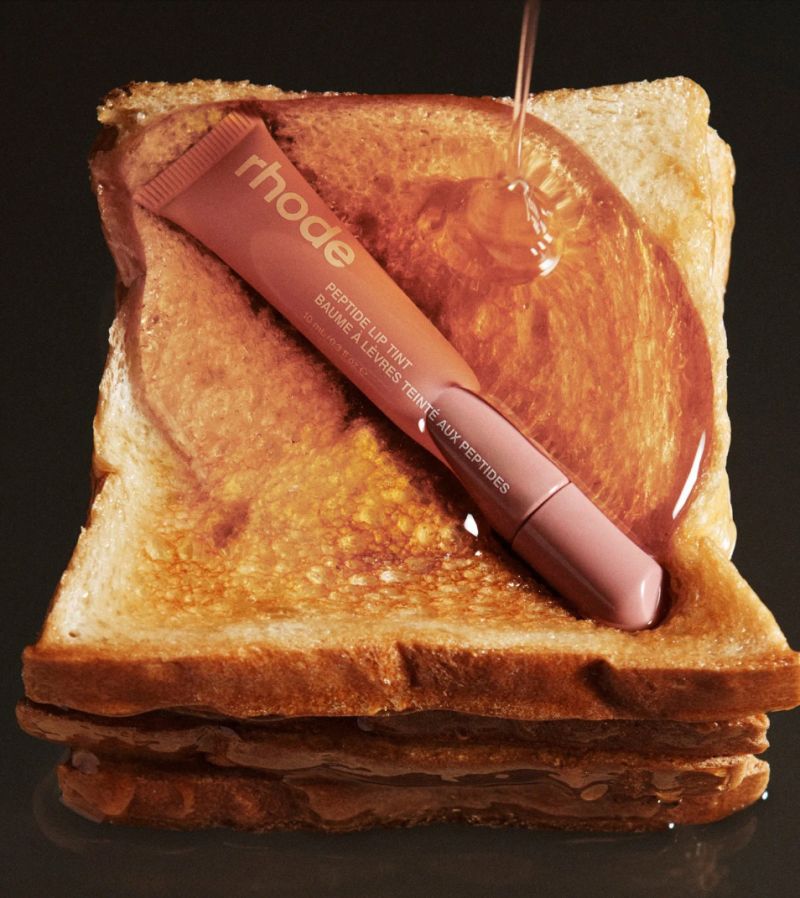
2025 was the year beauty brands made ASMR go viral. Creamy close-ups, pump sounds, dreamy textures: we were hypnotized.
🧠 Why It Worked: Sensory marketing + aesthetic overload = irresistible social media campaign.
5. Duolingo Passed Away

Duolingo said “plot twist” and killed off their iconic green owl, Duo, in the most chaotic Gen Z way possible. TikTok spiraled. Turns out, it was a fake-out rebrand reveal. Mourning quickly turned into free marketing.
🧠 Why It Worked: Shock value + storytelling = one of the best social media campaigns of the year.
6. Bumble x Amelia Dimoldenberg

Bumble brought in the queen of awkward interviews to front their Valentine’s campaign, giving real dating advice with a hilarious twist.
🧠 Why It Worked: Authenticity. Gen Z can sniff out a fake: this social media campaign felt fresh and funny.
7. Carl’s Jr “Hangover Burger” Super Bowl Campaign
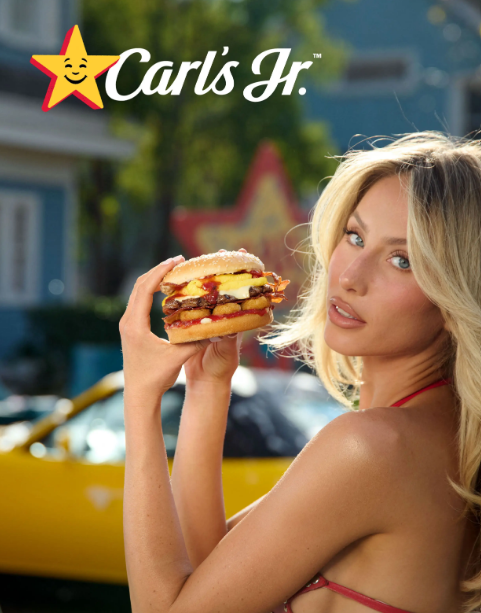
Carl’s Jr. resurrected its spicy 2000s marketing with a modern twist: TikTok queen Alix Earle demolished a burger on Super Bowl Sunday like it was high fashion. Messy? Yes. Viral? Also yes.
🧠 Why It Worked: Nostalgia + influencer clout = chef’s kiss social media campaign.
Tips to Run Successful Social Media Campaigns
Okay, now that you’re sufficiently inspired (and maybe mildly obsessed?) with 2025’s best social media campaigns, let’s get into the real tea: how you can pull one off too. Whether you’re a scrappy startup or a brand with Beyoncé-budget, these tips will help you serve main character energy across every scroll, swipe, and share.
1. Set Clear Goals
You wouldn’t start a skincare routine without knowing your skin type, right? The same logic applies here. If you don’t know what you’re aiming for, how will you know if you hit it? Every great social media campaign starts with a SMART goal:
Use the SMART method: Specific, Measurable, Achievable, Relevant, Time-bound. Example? “We want to boost our Instagram engagement by 20% over the next 3 months by posting four Reels per week.” Clean. Clear. Cute.
Pro Tip: Different goals = different vibes. Going for sales? You might want to lean into influencer UGC. Want visibility? Time to trend-jack or meme your way to a viral social media campaign.
2. Choose the Right Social Media Platforms
TikTok, LinkedIn, Pinterest – each platform vibes differently. Pick where your audience hangs out, and design your social media campaign for that ecosystem. Just because TikTok is poppin’ doesn’t mean your B2B SaaS tool belongs there. Pick platforms that match your target audience and content type.
- Instagram & TikTok: For visual storytelling, UGC, and trend-hopping.
- LinkedIn: For flexing thought leadership and closing B2B deals in style.
- YouTube: For long-form deep dives (hello, product demos).
- Pinterest: If your brand has aesthetic goals or lives in DIY-land.
Think in features too: Stories are great for BTS, Reels for virality, and Threads? TBD, but don’t sleep on it.
3. Develop a Strong Brand Voice
Consistency is ✨key✨. Your captions, Stories, ads, and even auto-replies should feel like one cohesive character. Think of your brand voice as the secret sauce behind a standout social media campaign – it’s what makes you recognizable, relatable, and scroll-stopping.
Take e.l.f. Cosmetics, for example. Their viral #eyeslipsface TikTok social media campaign didn’t just pop off because of the music – it was their brand voice: confident, Gen Z-approved, and fun without trying too hard. They used cheeky captions, meme culture, and influencer collabs to create a vibe that felt like your best friend hyping you up in the group chat.
Or look at Liquid Death. Their entire marketing strategy reads like a metal band’s Instagram account – aggressive, hilarious, and fully committed to the bit. They once released a branded tarot card deck. Yes, really. And it worked, because it felt so on-brand. That level of tone commitment made this a social media campaign that we all remember.
✨ Pro tip: Create a “vibe guide” for your team. Define your tone, banned phrases (bye, corporate jargon), emoji rules, and even preferred meme formats or GIF sources. It’ll help your entire team keep your social media campaign snatched and consistent across all platforms.
Image Sources: The Drum, The Vendry
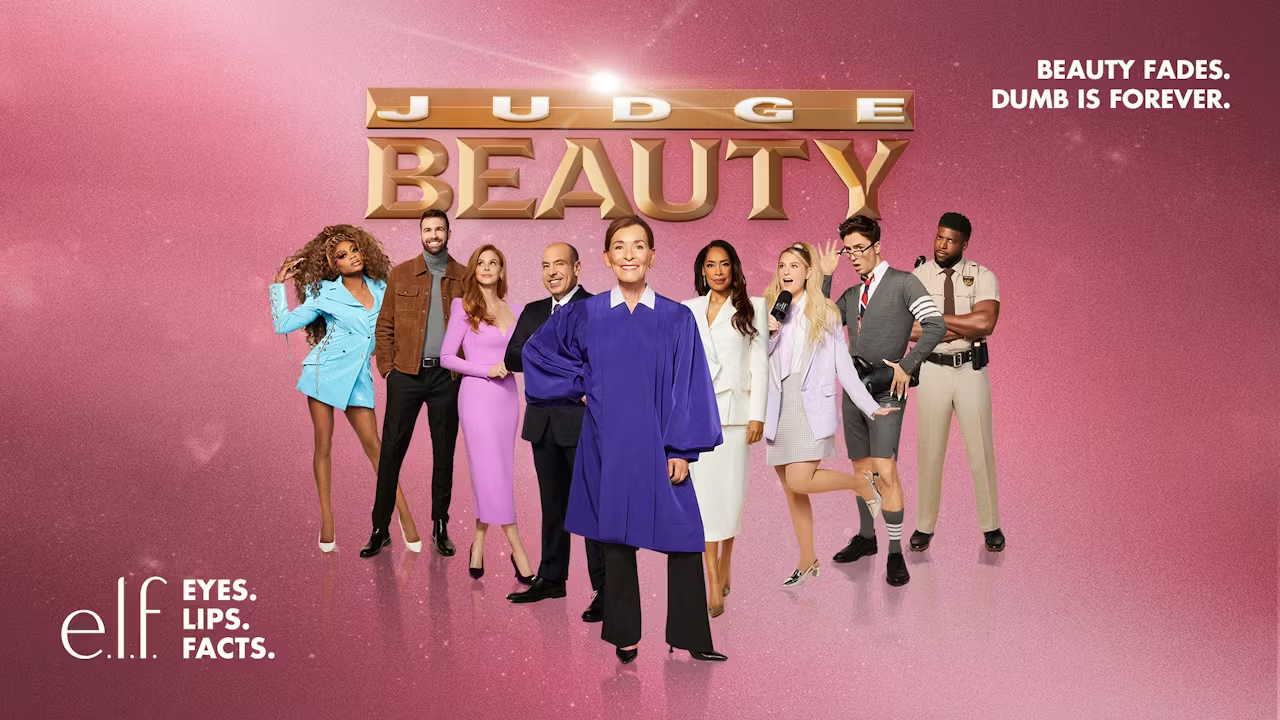

4. Create Engaging Content (Ugly Posts? Couldn’t Be Us.)
“Ugly posts” are canceled. If a social media campaign isn’t scroll-stopping, it’s getting ghosted. Harsh but true. In a world flooded with content, high-quality visuals aren’t optional – they’re your brand’s survival kit. The best social media campaigns are built on visuals that stop the scroll and instantly communicate your vibe.
Let’s break it down:
- Canva: A must-have for lean teams or solo marketers. Canva’s templates, drag-and-drop features, and brand kits make it easy to stay on-brand without needing a design degree. It’s especially perfect for fast-moving internal teams who need to produce high volumes of content without a full-time designer.
- Adobe Express: Great for brands with slightly more design-savvy users who still want the convenience of templates. It integrates well with other Adobe tools, so if you’re already using Photoshop or Illustrator, this one’s a no-brainer.
- InShot: Ideal for TikTok and Instagram Reels editing on the go. Use it for slicing up UGC, adding slick transitions, or layering text that actually looks cool.
Want a brand doing it right? Feast your eyes on Glossier. Their feed is a dreamy palette of pinks, creams, and soft-focus textures. But don’t let the aesthetic fool you – each post is super intentional. Product-focused, but still lifestyle-driven. That’s how you blend branding and storytelling visually, and it’s why they’ve landed on so many “best social media campaigns” lists over the years.
Another banger? Duolingo. Their chaotic green owl mascot is a visual brand all on its own. The team leverages bold character animations and meme formats that feel native to each platform, especially TikTok. Every social media campaign is instantly recognizable – and meme-worthy.

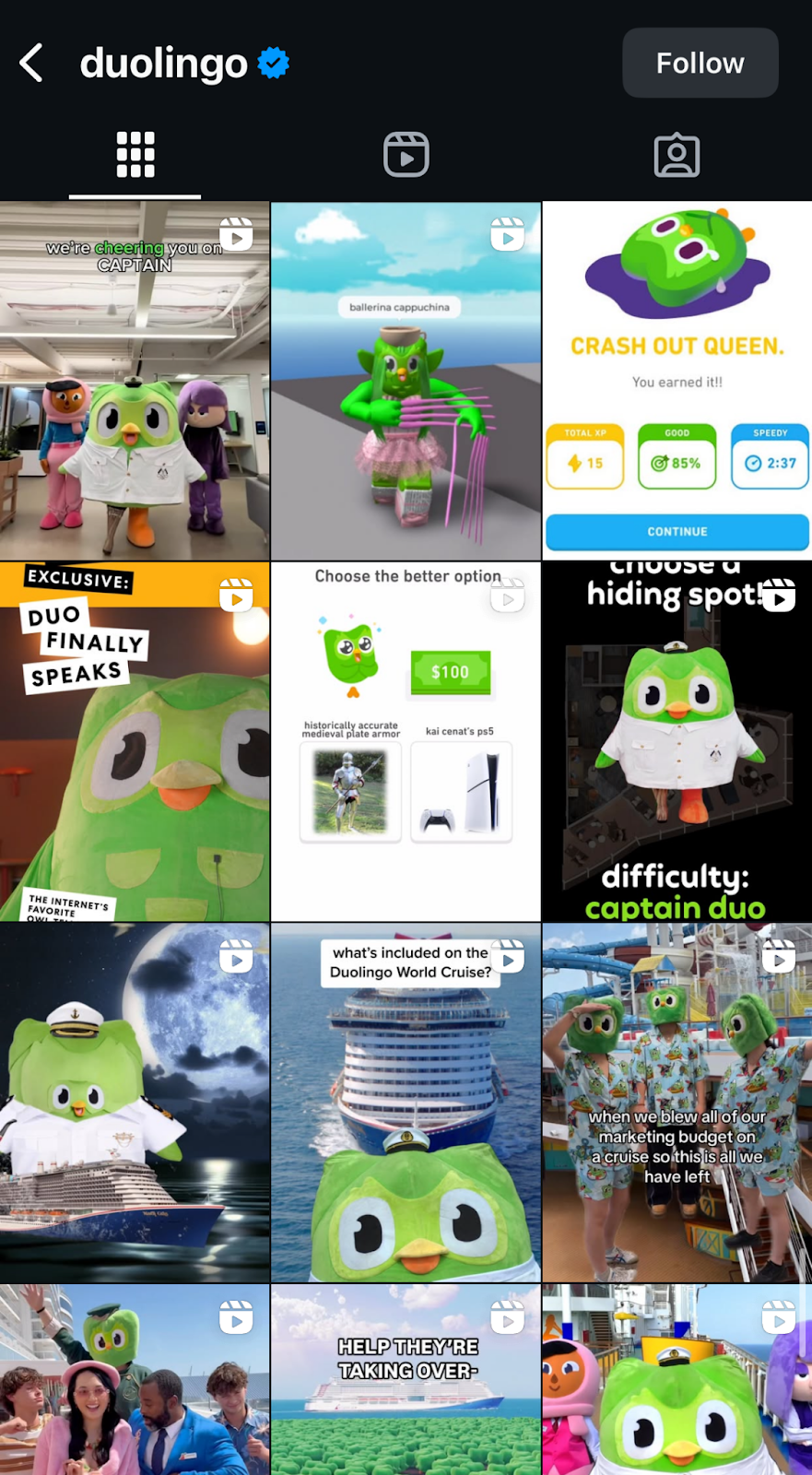
5. Leverage Hashtags Strategically
Hashtags can supercharge your social media campaigns – if you use them right. Mix branded, trending, and niche hashtags that make sense for your content. Spammy tags? Not it.
Good social media campaigns use hashtags with ✨intention✨. Why? Because the right ones boost discoverability, strengthen community, and help you ride the algorithm wave like a pro surfer. Here’s how to finesse your hashtag game:
✅ DO:
- Use 1-2 branded hashtags that feel fun, sticky, and uniquely yours. Think #ShotoniPhone or #EyesLipsFace – easy to remember, made to be reposted.
- Add 3 – 5 trending or niche hashtags relevant to your content and audience. These help you show up in curated topic feeds and niche interest bubbles.
- Play with hashtag challenges or games. UGC-based social media campaigns thrive on a clear, catchy hashtag – bonus points if it’s tied to a trend or pop culture moment.
❌ DON’T:
- Spam trending tags that don’t relate to your content. (Using #TaylorSwift on a B2B SaaS post? We see you, and we judge.)
- Copy/paste the same group of hashtags on every post. Instagram’s algorithm is smarter than that – and so is your audience.
💡According to our blog on hashtags, branded hashtags improve campaign recall by up to 34% and increase UGC participation by as much as 2.5x. That’s not a flex – that’s data. And don’t sleep on platform-specific behavior. On TikTok, hashtags fuel the discovery feed (aka the FYP). On Instagram, they’re key to reaching new eyes. On LinkedIn? Keep it minimal and professional – this isn’t a thirst trap.
At the end of the day, strategic hashtags can be the unsung heroes behind the most influential social media campaigns when used right. So create with purpose, test what works, and make your hashtag strategy just as iconic as your content.
6. Maintain a Consistent Posting Schedule
Inconsistency? It’s the digital equivalent of ghosting your followers. And the algorithm will notice. Regular posting isn’t just about filling the feed – it’s how a social media campaign stays top of mind (and top of timeline). Enter: the content calendar.
Map out your content weekly. Batch your posts. Schedule in advance. Keep things spicy, but steady. Your audience should know when to expect you, and your brand should feel like a reliable bestie, not that friend who only texts when they’re bored.
When should you post? Here’s a cheat sheet:
Keep in mind, these are just general sweet spots – check your platform analytics for specifics based on your audience!
| Platform | Best Times to Post (Local Time) | Frequency Recommendation |
| Tues-Thurs, 11AM-2PM | 3-2x/week | |
| TikTok | Mon-Fri, 2-5PM | 4-7x/week |
| Tues-Thurs, 9AM-12PM | 2-3x/week | |
| Mon-Fri, 1-3PM | 3-5x/week | |
| X (Twitter) | Mon-Wed, 9AM-1PM | Daily (or more) |
| Sat-Sun, 8-11PM | 3-5x/week | |
| YouTube | Thurs-Sun, 12-4PM | 1-2x/week |
Sources: Best Times to Post on Social Media in 2025 – Days & Times | Sprout Social , https://blog.hootsuite.com/best-time-to-post-on-social-media/ , Best Time to Post on Instagram in 2025 (6M+ Posts Analyzed) , Best Times To Post On Social Media In 2024 [Original Research]
Bottom line: Consistency isn’t just a vibe, it’s a strategy. And when paired with the right tools and timing, it’s how your social media marketing campaign can stay on top.
7. Engage Actively with Your Audience
A social media campaign without engagement? That’s just a glorified slideshow. If you want your brand to be part of the iconic social media campaigns out there, you have to get social on social. Let’s talk numbers: according to Sprout Social, brands that actively engage with their audience see up to a 21% increase in customer loyalty. And that’s not all – Hootsuite found that posts with higher response rates also get prioritized by algorithms, leading to up to 2x higher reach and engagement. Translation: Talk to your people, and more people will see your content.
So what does real engagement look like?
- Reply to comments (even if it’s just a fire emoji🔥)
- Answer your DMs – yes, even the weird ones.
- Run interactive Stories: polls, sliders, “this or that,” AMA’s.
- Quote-tweet your fans. Repost UGC. Drop a cheeky meme.
Need inspo on a social media campaign? Brands like Duolingo are out here flirting with followers via their owl mascot, turning every TikTok into a chaotic delight. Wendy’s is legendary for its savage Twitter roasts that people beg to be a part of. And Ryanair? They made budget airlines funny. They literally turned their planes into meme queens, and their snarky TikTok presence has earned them millions of views.
8. Leverage Influencers and Brand Advocates
Influencers are the new PR–and micro-influencers? Even better ROI. Don’t just chase follower counts, find creators who get your vibe.
How do you go about finding influencers who vibe (i.e. align with your brand)? Search for influencers who embody your brand’s core values and appeal to your target audience. Consider factors such as follower count, engagement rates, and content relevance. Micro-influencers often offer higher engagement rates, while macro-influencers provide broader reach. Influencer sourcing platforms like CreatorIQ or GRIN can assist in identifying suitable partnerships and managing influencer outreach to make your social media campaign the best it can be.
Keep in mind that each type of creator can come with their own set of pros and considerations. Here’s how we segment influencers by audience size:
- Mega Influencers (1M+ followers): Think celebs, reality stars, or internet royalty. Big names = big reach, but also big $$$. Great for brand awareness and making a splash. Example: when Amelia Dimoldenberg did her Bumble thing? Instant clout.
- Macro Influencers (500K-1M): They’re well-known in their niche and offer solid reach and engagement. Ideal if you want to balance scale with relatability.
- Mid-Tier Influencers (50K-500K): These are your local internet celebs – big enough to move the needle, but still close to their followers. Perfect for product drops or event promos.
- Micro Influencers (10K-50K): Small but mighty. These creators have loyal communities and higher engagement. Great for driving trust and niche appeal: skincare girlies, booktokers, pet-fluencers, etc.
Hot take… micro and mid-tier creators are the secret sauce of ROI. They’re more affordable, more authentic, and their followers actually listen.
AND shameless plug, if you have any doubts or confusion about influencer marketing, AdParlor is the perfect agency to help you slay the game.Let’s connect!
9. Track Performance and Adjust Strategy
Don’t post and ghost. Effective social media campaigns aren’t just about the launch, they’re about the receipts. You’ve gotta know what’s working, what’s flopping, and what just needs a sprinkle of glitter (aka, a meme). Let’s break down what you actually need to track – and why it matters.
Engagement (likes, shares, comments, saves)
This is your social pulse check. High engagement means your content is vibing with your audience. Are people double-tapping, commenting with emojis, or tagging their friends? That’s the algorithm’s love language. It signals relevance and boosts visibility.
Click-through Rate (CTR) & Conversions
Getting likes is cute. Getting clicks that lead to sales or sign-ups? Iconic. CTR shows how compelling your call-to-action is. Low clicks? Try spicier captions, stronger CTAs, or more obvious link placement. Conversion tracking is your holy grail for ROI – how many people actually took action because of your campaign?
Follower Growth
Follower counts aren’t everything, but steady growth shows you’re attracting new eyeballs and staying relevant. Sudden spikes or dips? Dig into what caused the shift: was it a viral moment or maybe a brand misstep?
ROI (Return on Investment)
We’re not just here for vibes. Your social media campaign should also deliver business value. ROI measures whether your efforts are actually worth the time, money, and memes. Calculate it by comparing campaign spend to the revenue or value generated, whether that’s sales, sign-ups, or brand awareness.
Use tools like:
- Google Analytics – Tracks how social traffic behaves on your website (and who actually converts).
- Meta Business Suite – Gives insights across Instagram and Facebook, including engagement, reach, and ad performance.
- TikTok Analytics – See what sounds, trends, and videos drive performance so you can ride the algorithm wave.
- Sprout Social / Hootsuite – Bonus options that provide visual dashboards and deeper cross-platform insights.
The real power move? Don’t just track, adjust. Your data should guide your next big idea. That’s how you go from “meh” to memorable.
FAQs
What is the most successful social media campaign?
Tough question, but if we had to crown a champ, it’s Spotify Wrapped. Every year, it hits us with a mix of personalization, shareability, and serotonin. Users don’t just consume content, they flex it. Wrapped turns casual listeners into loyal ambassadors, all while boosting Spotify’s visibility without spending a dime. Now that’s one of the best social media campaigns to ever do it.
What is the 50/30/20 rule for social media?
This content rule keeps your feed balanced, engaging, and not totally self-obsessed. Basically, 50% of your content should educate or entertain, 30% can promote your brand (in a non-cringe way), and 20% is purely for engagement (think polls, questions, AMAs, and the kind of stuff that gets people talking). It’s a vibe check for your content calendar.
Which social media platform is best for campaigns?
That depends on your goals. TikTok dominates for reach and viral storytelling. Instagram wins with visuals and Reels. YouTube is the go-to for long-form content and product deep-dives. And LinkedIn? The B2B MVP. Pinterest might be quietly crushing it too, especially for evergreen inspiration. The best social media campaigns meet their audiences where they are, then blow up their feeds with fire content.
What are the benefits of running social media campaigns?
Let’s be real: campaigns aren’t just cute graphics and trendy sounds. They drive real results. We’re talking brand awareness, deeper engagement, more traffic, and actual sales. Plus, they give you direct audience feedback in real time, which is basically free market research in your DMs.
How can I run successful social media campaigns?
Set clear goals. Pick the right platform. Nail your creative. Engage like a human. Track performance and tweak as needed. And if it sounds like a lot? It is. That’s where we come in. AdParlor helps brands build a solid social media presence by handling strategy, creative, influencer partnerships, and everything in between. You focus on the vibes. We’ll bring the results.
Final Thoughts
If 2024 was the year of experimentation, 2025 is all about intentionality. The best social media campaigns right now aren’t just flashy, they’re rooted in strategy, purpose, and authenticity. We’re talking full-funnel moments that build community, drive clicks, and keep your brand top-of-feed and top-of-mind.
Let’s break it down: we covered how to define a strong brand voice (because bland doesn’t trend), how visuals matter more than ever (ugly posts are out), and why hashtag strategy is still alive and well (when used right). We mapped out the importance of consistent scheduling (with receipts on the best times to post!), then got into the real MVP: engagement. Replying to comments, asking questions, dropping emojis – it’s not fluff, it’s performance fuel. From there, we explored the value of tracking metrics that matter so you’re not just posting into the void. This is how social media campaigns evolve: through data, reflection, and a little sparkle.
So, where do you go from here? Whether you’re planning your next campaign, trying to go viral (but like, in a good way), or just want to level up your presence, we’ve got you.
If you’re ready to slay your next social media marketing campaign, partner with the experts at AdParlor. We know creators, we know strategy, and we’ll make your brand the main character. Let’s connect!